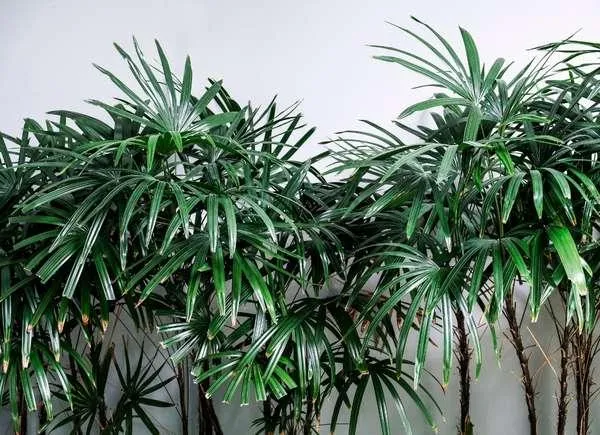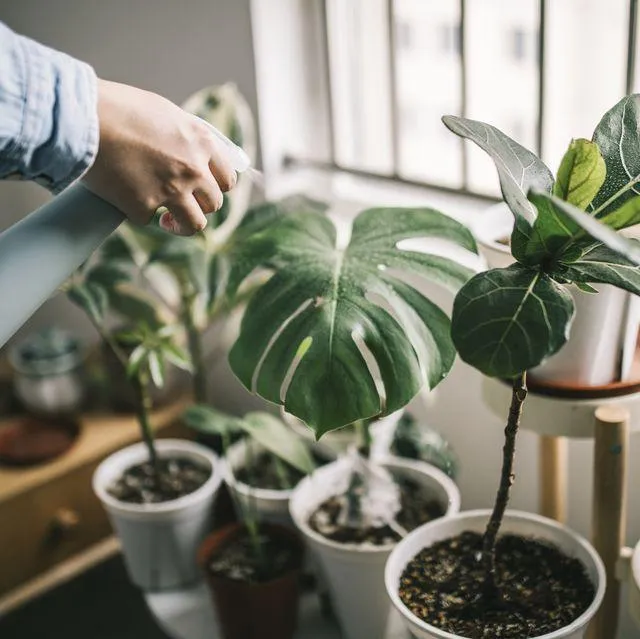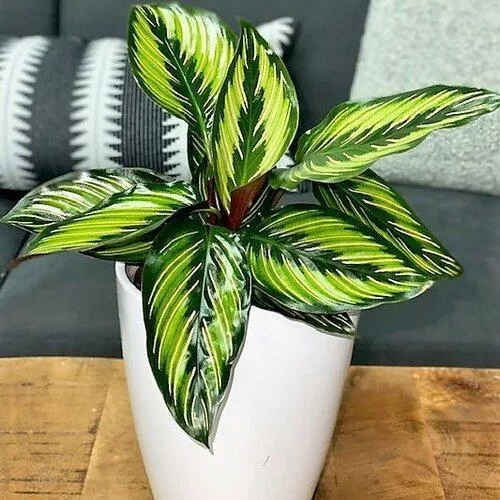Top Indoor Tree Options for Low-Light Environments
For those who love the feel of plants but don’t have an abundance of natural light, indoor trees can bring nature inside while thriving in less-than-ideal lighting. From my experience gardening in low-light rooms, certain tree varieties tolerate weaker illumination better than others. In this article, I’ll cover some of the best indoor tree choices for low light and provide care tips to help them flourish with minimal sunlight.
Snake Plants
- Also called mother-in-law’s tongue, snake plants (Sansevieria genus) are tough as nails and can survive on very little light. Their thick, sword-like leaves store water so they need watering only occasionally. I keep several snake plants in a north-facing room with windows that get indirect light all day but no direct sun, and they’ve thrived for years with minimal care.
- Snake plants process carbon dioxide at night and released oxygen, making them excellent indoor air purifiers. They’re basically impossible to kill unless abused. They’re also interesting sculptural plants that add texture and height to any indoor space.
Chinese Evergreen
- Chinese evergreen (Aglaonema genus) loves high humidity but tolerates low light quite well. Its waxy oval leaves come in a variety of colors like dark green with creamy white or silver margins. I grow mine in my shaded bathroom and it’s putting out new leaves regularly with just occasional morning sun exposure.
- Chinese evergreen makes an ideal tabletop plant, and it does well as a houseplant or office plant. Its wide, sturdy leaves hold up well even in lower light conditions as long as it’s not totally light deprived.
Dwarf Umbrella Tree
Although slow-growing, dwarf umbrella trees (Schefflera arboricola) can adapt to low-light rooms as long as they receive some supplemental light during darker months. Their lacy, fern-like foliage comes in shades of green and looks great in a corner that doesn’t get much direct sun. From my experience, dwarf umbrella trees are less fussy than full-size umbrella trees about light needs.
Cast Iron Plant
Cast iron plants (Aspidistra elatior) live up to their name with their nearly impossible-to-kill nature. Their durable, strappy leaves can withstand very low light and infrequent watering. I’ve kept cast iron plants thriving in a basement laundry room with just a skylight for years. Their dark foliage makes a handsome, textural accent and they’re virtually care-free.
Peace Lily
With their striking white blooms and glossy foliage, peace lilies (Spathiphyllum genus) are a popular choice for low-light conditions. However, they require more care than some of the more durable options previously mentioned. Peace lilies indicate their water needs through drooping leaves, so check them regularly in low humidity areas. In my experience, peace lilies prefer temperatures above 60°F to bloom consistently in lower light conditions. Locate them where they’ll receive some indirect sun for a portion of the day.
ZZ Plant
Commonly called ZZ plants (Zamioculcas zamiifolia), these eye-catching botanicals have thick, waxy leaves in shiny hues of dark green edged with creamy white or yellow. Their beautiful foliage sits atop underground rhizomes from which it emerges looking lush. ZZ plants are notoriously resilient and don’t seem to show signs of stress even in the lowest light. I have one in a tree-shaded porch that receives sun only in the early morning, and it continues thriving with infrequent watering. Their minimal care needs make ZZ plants an excellent choice for low-light environments.

As one can see, various trees and indoor foliage tolerate dappled shade and lack of direct sun quite well. With the right variety and care techniques tailored to a plant’s needs, it’s absolutely possible to maintain living greenery indoors even with more modest lighting. Proper drainage, infrequent watering matched to dryness level, and supplemental lighting during darker months will help induce healthy growth. By choosing plants from this list and understanding their needs, you can easily grow indoor trees that add green beauty to low-light rooms.
Additional Care Tips
Lighting: Locate indoor trees near brightest windows that collect indirect sun for at least a few hours every day. Use grow lamps or plant lights directly above low-light plants over winter.
Water: Water less in winter when light levels drop. Let soil dry slightly between waterings rather than keeping constantly moist.
Humidity: Mist plants in dry indoor air and group pots together for a collective humidity boost. Pebble trays or a humidifier also aid plants prone to leaf browning.
Fertilizer: Feed indoor trees during active growing periods with a water-soluble houseplant fertilizer at half-strength every 4-6 weeks.

Pruning: Remove dead or damaged leaves and stems to encourage bushy new growth and neaten plants’ appearance. Thin branches if overcrowding occurs.
Pots: Choose containers with drainage holes for proper water absorption and aeration of soil. Repot only when roots emerge from pot’s drainage holes.
With a bit of know-how on lighting levels, watering needs, grooming techniques, and the types of trees suited to various light conditions, you can successfully nurture beautiful indoor greenery in any space, whether bright or dimly lit. Finding the right low-light trees and adjusting their care routine lets you bring the living beauty of foliage indoors all year round. So don’t hesitate to experiment with implementing these recommendations – I’m sure you’ll be pleased with the results! Please let me know if you have any other questions.
Top Indoor Trees for Low Light Conditions
| Tree | Light Needs | Size | Care Needs |
|---|---|---|---|
| Snake Plant | Low | 2-4 feet tall | Water every 2-3 weeks |
| Pothos | Low to Medium | Trailing vines up to 10 feet long | Water when top inch of soil is dry |
| Chinese Evergreen | Medium | 2-6 feet tall and wide | Water when top inch of soil is dry |
| Peace Lily | Medium | 1-3 feet tall | Water when soil is dry |
| Philodendron | Low to Medium | Trailing vines up to 10 feet long | Water when top inch of soil is dry |
FAQ
-
What types of indoor trees grow well with lower light?
Some varieties of trees that can tolerate indoor light levels include: Chinese evergreen, snake plant, pothos, peace lily, and rubber plant. These plants are sometimes called “low-light houseplants” since they don’t need as much sunlight as others to stay healthy.
-
How much light do low-light indoor trees need?
Low-light trees usually survive with medium to low indirect sunlight. Basically, anywhere from 4 to 6 hours of light each day through an east, west, or south-facing window should do the trick. They won’t grow as quickly as with brighter light, but they’ll stay alive.

-
Is it hard to care for a low-light indoor tree?
Caring for a low-light tree is pretty simple actually. Water when the soil gets dry, just don’t let them sit in soggy dirt. Feed them monthly in the spring and summer. You can prune them to keep them bushy. As long as they get at least some light each week, they’ll be fine…I think.
-
How do I pick the best low-light indoor tree for my space?
When choosing a low-light tree, look for ones with thicker, leathery leaves. These types of foliage hold up better in low-light conditions. Consider how much space you have too – some trees like fiddle leaf figs get huge! Talk to a salesperson at your garden center for personalized suggestions.
-
Will low-light indoor trees live forever?
Although some varieties can survive for many years with very low care, nothing lives forever! Eventually, even the hardiest low-light trees may decline if conditions aren’t ideal. On the bright side, trees are pretty resilient. As long as they receive at least some indirect sun weekly, most types should stick around for a good long while.
-
What happens if you give a low-light tree more sunlight?
Giving a low-light tree substantially more sunlight than it’s used to could shock the plant. However, introducing partial sun gradually over the course of weeks or months may cause the tree to perk up quite a bit. Stronger sunlight often means lusher growth and a more robust appearance. Just go slow when adjusting a tree to changed light levels so it has time to adapt.
-
Any tips for attracting beneficial insects to my indoor trees?
Some people say laying out rotten wood or stone piles can attract beneficial bugs to indoor plants. Apparently many insects actually help trees by preying on pests. Nevertheless, I’d be a little too skeeved out having extra bugs buzzing around my house! Perhaps a simpler approach would be sticking to non-chemical treatments if problems arise.

